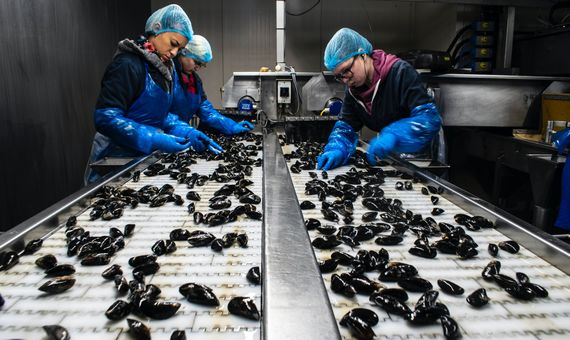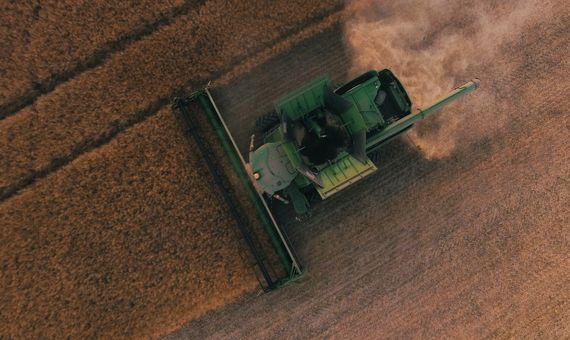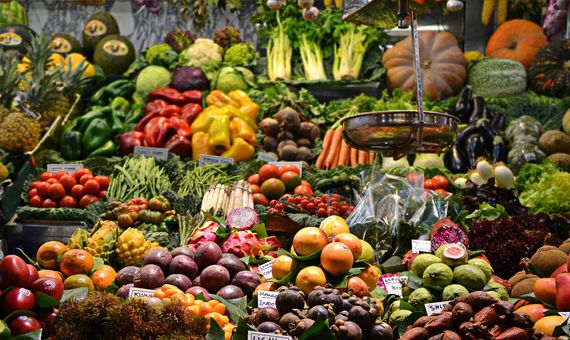The COP26 climate summit in Glasgow in November 2021 has dashed hopes of achieving more ambitious commitments aimed at reaching the targets of the 2015 Paris agreement. On 1 November, Nature published a survey in which a large majority of participants, all authors of the latest UN climate change assessment report, were sceptical that governments would succeed in markedly slowing the pace of global warming. But to blame politicians alone for the lack of progress would be a distortion; individuals can also contribute to the fight against the climate emergency. And for those who don’t know where to start, here is a useful clue: our food choices can make a big difference.
Today we all know, or should know, that our activities have an environmental impact that can be measured in different ways. The term carbon footprint refers specifically to the greenhouse gases (GHGs) responsible for climate change that are generated as a result of whatever activity, in terms of tonnes of CO2 equivalent (tCO2e), the most abundant GHG produced by burning fossil fuels.
The impact of our diet on the global emissions
It is worth mentioning that the concept of the individual footprint has been shrouded in controversy, as it was originally promoted by oil giant BP at the beginning of this century to divert attention away from fossil fuels. However, the idea has taken hold based on the premise that many individual actions can build collective action. With the popularisation of the concept, we can now find a variety of calculators on the Internet to estimate our personal footprint. Although the results may vary and are approximations based on standards, there is now a widespread consensus on which factors have the greatest impact on reducing our footprint. And while measures such as cutting down on car and air travel seem to be widely understood, the major influence of our diet, which can add up to almost a third of an individual’s carbon footprint, has perhaps not been embraced as much.
Food production accounts for between a quarter and a third of global human-caused GHG emissions, depending on the metric used. The most recent and comprehensive estimates put the figure at 34%, with an annual total of 18 gigatons of CO2 equivalent (GtCO2e), comprising production, processing, transport, packaging, distribution, consumption and waste management. Of this total, 71% is generated by agriculture and livestock farming, as well as land use. According to this study, published in Nature Food in 2021 by researchers from the European Commission (EC), half of the emissions from this large food sector are in the form of CO2, while 35% are methane. Although methane is a secondary player in overall GHG emissions, its long-term greenhouse effect is 28 times more powerful than that of CO2.

Taken together, these data leave no doubt that methane generated during food production is a major contributor to climate change. And within this sector, this gas has a clear primary source: livestock farming—through intestinal fermentation—together with the treatment of waste. It is therefore indisputable that a global reduction in the consumption of livestock products is an imperative in the fight against the climate emergency, irrespective of the figures that are published and the debates over meat consumption that are complicated by multiple perspectives, including ideological ones. As a takeaway, a study published in Nature Food in 2021 estimates that emissions from animal-based foods are twice as high as those from plant-based foods, 57% of the total compared to 29%.
However, it should not be ignored that according to the Food and Agriculture Organisation of the United Nations (FAO), the very body that sounded the alarm about livestock farming’s climate change footprint, there is great potential for efficiency gains in this sector that could reduce its carbon footprint by 33% if all farms were brought into line with the emission levels of the least polluting operations. But this does not cancel out the argument that a more responsible personal attitude towards climate change makes it advisable to reduce the consumption of meat and dairy products, especially from cattle, which are responsible for 70% of livestock emissions in terms of GtCO2e.
The B-side of plant-based diets
However, it would be a mistake to assume that an exclusively plant-based diet, without any other considerations, is in itself climate-neutral and completely eliminates concerns about the carbon footprint of food. As an example, the need to consume local products is often cited as the second most important requirement, after reducing meat, to alleviate the climate impact of food. Yet the EC study found that 96% of transport emissions in this sector are generated by local or regional road or rail journeys, with only 4% coming from international logistics. Interestingly, packaging contributes more emissions than transport, 5.4% compared to 4.8%, so unpackaged fresh produce is always preferable.

But as far as agriculture is concerned, it also has a climate footprint through changes in land use, fertilisers, soil erosion or methane emissions in rice paddies. Food production, including vegetables, occupies half of the planet’s habitable land. This fact has an often hidden side-effect: organic farming does not always have a lower environmental cost, because its lower use of fertilisers reduces the volume of food produced per unit area, which requires more land to be farmed. In addition, organic pesticides are not necessarily less toxic to humans than industrial pesticides, and often have to be used in greater quantities.
Specifically, food production, including fertilisers, is the largest contributor to emissions, accounting for 39% of total emissions from food, followed by land use and land-use changes, accounting for a third, and 29% for the rest of the life cycle. And methane is not just a livestock problem: rice, a staple food for much of humanity, is the beef of the plant world, the crop that contributes the most GHG emissions.
A cross-sectoral problem
In short, while individual recommendations tend to revolve around choosing a mostly plant-based diet, based on fresh produce—the advice to eat local food, while widespread, is not justified by the data—and to avoid junk food, consumers looking to lower their food footprint will be spoilt for choice unless they follow the guidelines of experts on ways to cut the environmental cost of food. As food scientist Sonja Vermeulen, a world authority on the climate footprint of food, told Carbon Brief: “There’s no single silver bullet. If we focus only on more plant-based diets, or only on improved agricultural practices, or only on the energy and transport sectors, we won’t get to where we need to be. We need all three.”

At least in terms of food, the trend is arguably more hopeful than government commitments. According to the EC study, between 1990 and 2015 global food production grew by 40%, but the increase in GHG emissions was comparatively smaller, from 16 to 18 GtCO2e, only 12.5%. As a result, the individual carbon footprint of food has fallen in a quarter of a century from 3 to 2.4 tCO2e. In other words, we produce more food, but at a lower per capita climate cost. The problem is that the world’s population will continue to grow, which will require more food. And this ties in with another action that some experts are recommending in the fight against climate change: having fewer children. Of course, in the face of this, perhaps the discussion about meat consumption does not go far enough.
Javier Yanes
@yanes68
Comments on this publication